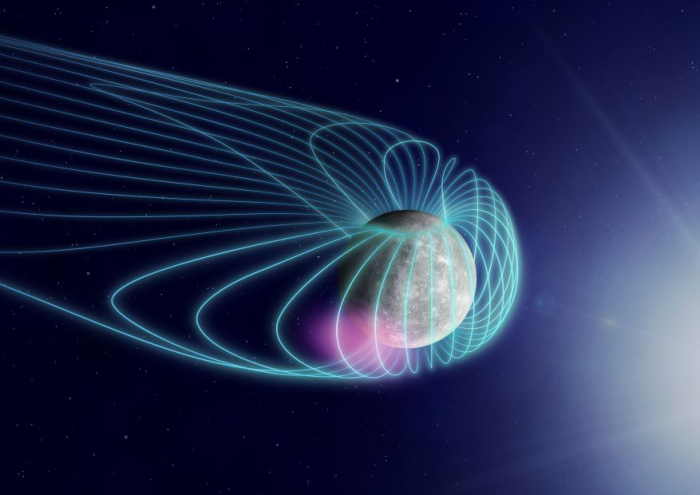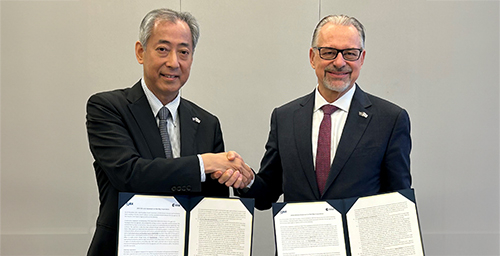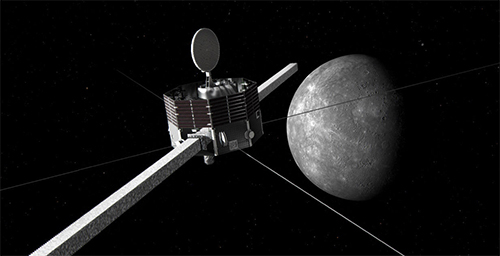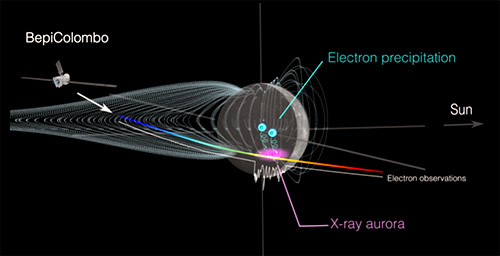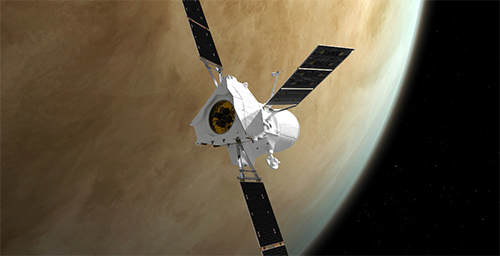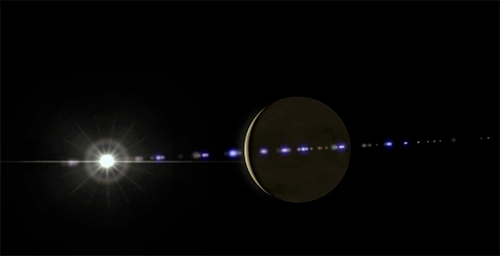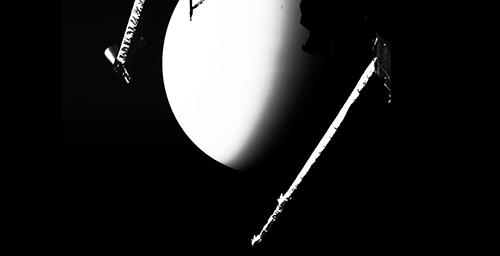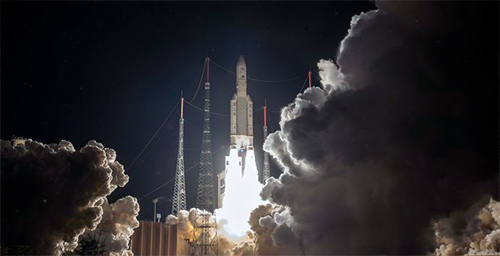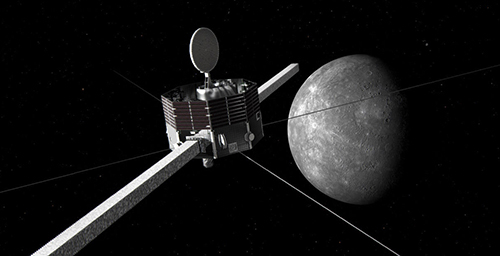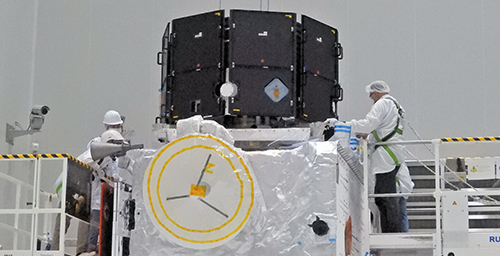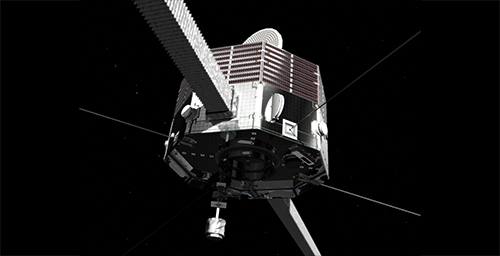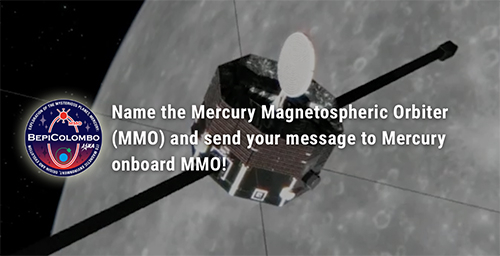~ Japan-Europe cooperation reveals aspects of the Mercury magnetosphere's electromagnetic environment for the first time ~
Research
The BepiColombo Mission is a joint project between the Japan Aerospace Exploration Agency (JAXA) and the European Space Agency (ESA) to explore the planet Mercury. As part of the journey to enter orbit around Mercury in 2025, the spacecraft conducted its first and second swing-by observations of Mercury on October 1, 2021 and June 23, 2022. These observations have revealed for the first time that electromagnetic waves (a type known as chorus waves), which can efficiently accelerate and scatter electrons, are generated on the morning-side of Mercury (within about 1,200 km from Mercury's surface). The electrons scattered by the chorus waves collide with the surface of Mercury and emit X-rays, generating the X-ray aurora※1. Previously, the mechanism of Mercury's X-ray aurora has not been understood, but these observations directly indicate the chorus waves as the driving source of the X-ray aurora. The research was conducted by an international joint research team from Kanazawa University, Tohoku University, Kyoto University, the Japan Aerospace Exploration Agency, MagneDesign Corpoeration, and the Laboratoire de Physique des Plasmas (France).
Like the Earth, Mercury has its own magnetic field and is surrounded by a region where that the forces from that magnetic field dominate, known as the magnetosphere. On Earth, the electromagnetic waves known as chorus waves are observed over a wide area from the planet's nightside to dayside. Chorus waves are known to efficiently accelerate low-energy electrons, often until they become radiation. In space around the Earth (the region up to geostationary orbits), satellites can sometimes fail due to sudden increases in radiation created due to chorus waves. However, Mercury's magnetic field is only about 1% of the strength of the Earth's magnetic field, and it was not previously known if chorus waves could be generated in a similar fashion.
The first-ever electromagnetic wave observation on Mercury was carried out by the international joint research team using the Plasma Wave Investigation (PWI) instrument mounted on the Mercury Magnetospheric Orbiter, MIO (hereafter referred to as the MIO spacecraft), which is the Japan-designed Mercury orbiter that forms part of the BepiColombo spacecraft while it is in its stacked configuration during the journey to Mercury. The AC magnetic field data recorded by PWI made the first detection of strong chorus waves in a limited area on the morning-side of Mercury. The team noted that the presence of chorus waves in a local area on the morning-side suggests that the shape of Mercury's greatly distorted magnetic field lines had a strong influence on chorus waves generation.
This first demonstration of chorus waves on Mercury reveals the universality of chorus waves generation on all planets in the Solar System that host an intrinsic magnetic field, and showed that even in weak magnetospheres such as that surrounding Mercury, high-energy electrons can be produced and fall to the planet surface to generate X-ray auroras. This achievement also contributes to the understanding of the plasma environment in outer space, including weak magnetic fields on the Moon and Mars, which supports human activities as they expand into space.
The results of this research were published in the Scientific Journal "Nature Astronomy" on September 14, 2023 at 16:00 BST.
DOI:10.1038/s41550-023-02055-0
Artist image of chorus wave generation on Mercury (credit: Kanazawa University, Mercury image: NASA/Johns Hopkins University Applied Physics Laboratory/Carnegie Institute of Washington)
※1: Please see below for the observations of electron precipitation that causes Mercury's X-ray aurora:
https://www.isas.jaxa.jp/en/topics/003448.html
About the MIO Mercury swing-by
BepiColombo is a Europe-Japan Mercury exploration mission, launched from French Guiana on October 2018. The spacecraft is currently navigating inter-planetary space with the aim of entering orbit around Mercury in December 2025. To place the spacecraft into orbit around Mercury, a large deceleration is required. BepiColombo is therefore performing a total of nine planetary swing-bys (One Earth, two Venus, six Mercury) during the voyage to use the gravity of the planets as breaks. BepiColombo conducted its first and second Mercury swing-by on October 1, 2021 and June 23, 2022. A third Mercury swing-by was completed recently on June 20, 2023. During each Mercury swing-by, the operation and telemetry are monitored from the operations room, and an explanatory talk is live-streamed. This has received many views and support! You can watch the broadcasts from the archive below (in Japanese):
- BepiColombo「みお」 第1回水星スイングバイ 前夜祭トークライブ〜
- BepiColombo「みお」 第1回水星スイングバイ ライブ中継
- BepiColombo「みお」 第2回水星スイングバイ みお運用室中継&トークライブ
- BepiColombo「みお 」 第3回水星スイングバイ 【第1部:トークライブ(前夜祭)】
- BepiColombo「みお 」 第3回水星スイングバイ 【第2部:運用ライブ中継】
- BepiColombo「みお」 第3回水星スイングバイ 【第3部:トークライブ(後夜祭)】
The remaining three Mercury swing-bys will be conducted in September 2024, December 2024, and January 2025. The spacecraft is scheduled to enter orbit around Mercury in December 2025. We will continue to share research results and operational status during this time, so please look out for news.

